Mother-Daughter Bonding (and Rampaging Animals) in Kenya

I thought bringing my mother to Kenya would help us grow our relationship and friendship, and to improve our mother-daughter bonding. I was right, but it was in a way I didn’t really plan… because really, life is never how you plan.
l had been working with Soysambu Conservancy for a few years. Our relationship started three years ago, when I went on a exploratory trip to make sure the program would be ethical, justice-focused and have a high standard of animal welfare. I was also going to make sure it would be safe. As a founder of a conservation company and a person who can read her moral compass, I make it a priority to visit all programs before we make them full partners. I want to not only understand where we are sending clients, but to be fully be engaged in the community and feel like a stakeholder. I also want to make sure every detail I tell volunteers is from my own eyes, not just a guidebook.
The most dangerous animal in East Africa, Cape buffalo can be up to 800kgs of pure anger. Most of the time they are in a group and totally fine, but when disoriented, threatened, separated or protecting their young, they are nothing to shrug off.
We got to work and started moving boulders, cutting grass by hand and using pulaskis to dig up large plants and trees that would be in the way of our road. The sun was hot, but we were keen to work. Every 100m, one of our ranger guides would move our 4×4 (a Maruti) closer to where we were working. This way, it would be easier to get water, and it would be safer in case the unthinkable happened and a lion came to check us out.
One of our ranger guides was in front of us, in the long grasses that hide all sorts of animals. He was making sure that no snakes, leopards, lions or other scary things were waiting for us, and he was also clearing a small area so we knew in which way to keep working.
I heard the noise first, without knowing what it was. It was a crashing and thumping, more than anything else. Broken branches and moving grass made me look up. Then I heard yelling. “RUN” was the only word I could make out through the panic.
I looked up and saw a Cape buffalo charging towards us, all horns and eyes. It looked like it was running in slow motion, or maybe that is just what my brain remembers from the sheer terror I felt–and still feel from that memory. My mother saw it at the same time and yelled “run!” I screamed too: “Buffalo, run, run, everyone run!” I threw the tool I was working with in the direction of the buffalo. I ran towards my mother, grabbed her arm and took off towards the 4×4.
Normally, you are meant to lie down. That is how people usually survive when charged by a buffalo, as the buffalo isn’t able to gore them or pick them up with their horns. Yet, with almost 1000kg of animal running at you, I assure you that lying down is the last thing you think about. I ran, we all ran.
Maybe my mother ran slower, because I was no longer running with her, I was carrying her. It isn’t that my mum isn’t strong or fit or able to run on her own. It’s just that superhuman adrenaline gave me the strength to almost fly to the 4×4, carrying my mother with me. I pushed her towards the vehicle and she tried to jump on the hood, thinking that scrambling to the top would give her more protection than the side panels would on the small truck. Maybe it would have worked if we’d had time to climb, but I saw that we didn’t. I grabbed my mother’s arm and threw her to the ground. Before she hit the ground, the buffalo made its first impact: she (we found out later it was a female buffalo) rammed the 4×4 head on, breaking the headlights, crushing the radiator and leaving severe dents in the bumper. The whole 4×4 moved back with the brutal force of angry Cape buffalo.
The two other volunteers got into the 4×4. The door was locked on one side but the window was rolled down so one person could get in before the first collision. The second got in through the rear door. As she slammed the door, the buffalo made her second strike.
It looked like it was running in slow motion, or maybe that is just what my brain remembers from the sheer terror I felt–and still feel from that memory.

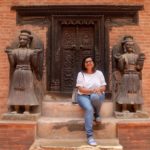

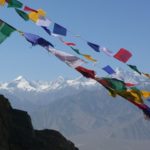

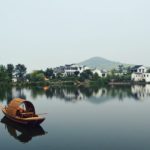
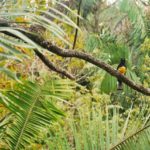
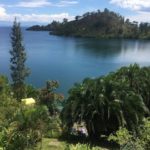

My heart is pounding and there’s a lump in my throat!! How scary.
Nora and Rena, so glad you are both OK. I was scared to death just reading your account of what happened, can’t imagine what you were feeling. Hope we see both of you on May 29 at our Livingstone cousin get together so we can all give you big hugs. xo
Amazing! Will you be able to make it to the family reunion in May? I have only met you once before, in the late ’80’s when my parents and I stayed with your family in Germany. I think you were about 10 years old at the time. Can’t wait to hear more about your adventures!
I Nora’s mother am most thankful for a?l of us running like hell. And nobody frozen in the spot they were standing. It would of been a very difficult outcome had that happen.
Almost sleeping with Elizabeth the black cobra. Truck being serrounded by over 70 hyenas. Camels in the middle of nowhere.
That’s the great thing about traveling. It hasn’t been a exalent trip. If you don’t have a couple of really great story’s.To tell when you get home.
I’m ready where are we going next year?